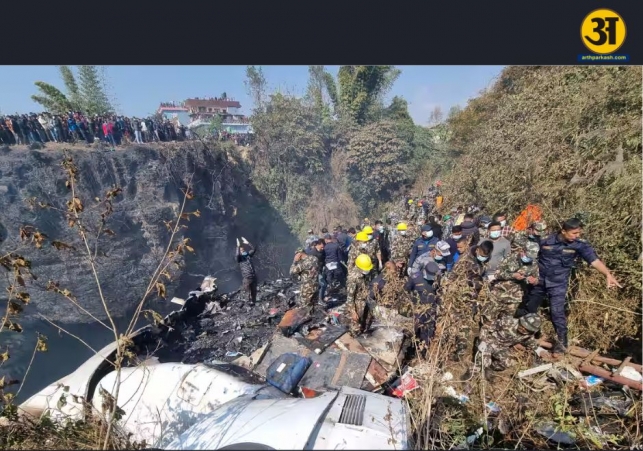
Nepal's high rate of plane crashes
Nepal's annual flight disasters: unveiling the causes behind frequent plane crashes
A Saurya Airlines plane crashed in Kathmandu, Nepal, on the morning of July 24, killing at least 18 people. The crash occurred during takeoff at Tribhuvan International Airport. There were 19 people on board, including two crew members and 17 technicians who were heading to Pokhara to repair another aircraft. The pilot is the only survivor of the crash.
Firefighters were seen battling a blaze at the crash site, with thick black smoke rising into the sky. The plane appeared to tilt and crash shortly after taking off, as shown in TV footage.
Reasons for frequent crashes
Nepal has a history of frequent plane crashes due to several factors. The country has seen an unusually high number of crashes over the past decade, including the deadliest one on January 16, 2023, in Pokhara, where 72 people died. This crash in Kathmandu is the 13th in the past 12 years.
ALSO READ: G20 Summit focuses on Digital Tax amid looming US Tariff threat
One major reason for these accidents is the lack of proper aircraft maintenance and training. Nepal's struggling economy affects its ability to maintain aircraft and provide adequate training for staff. The country also faces challenges with its difficult topography, making navigation to small, remote airports tricky.
In addition, Nepal's infrastructure for weather forecasting is limited, especially in remote and mountainous areas. The weather can change rapidly and become dangerous for flights. While it was not raining at the time of the crash, low visibility was reported in the area.
ALSO READ: Kamala Harris vs Donald Trump: opinion polls show game-changing dynamics
Kathmandu's Tribhuvan International Airport is located in a valley surrounded by mountains, adding to the difficulty of landing and taking off. The airport’s challenging location and nearby residential areas make it a difficult place for pilots, especially for larger planes needing to navigate through narrow openings in the mountains.





